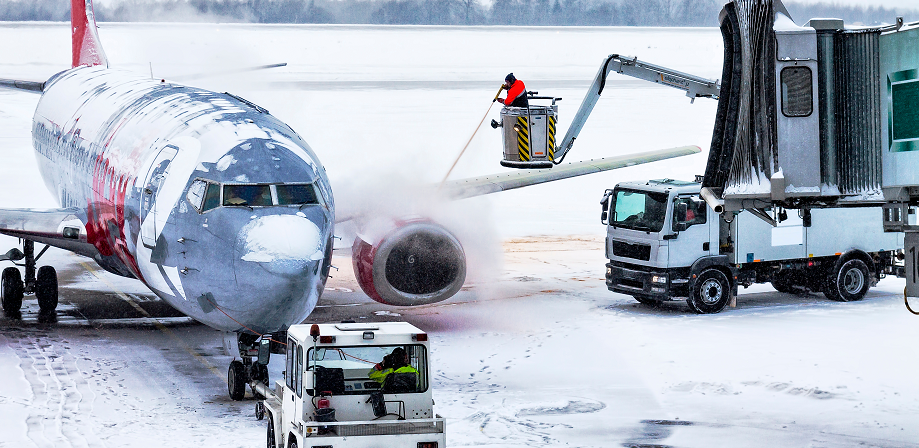Sofema Aviation Services (SAS) www.sassofia.com considers the potential for Contamination following De-icing / Anti-icing activities.
Introduction
There is a known potential for Type II, III or IV de-icing/anti-icing fluids to accumulate and dry out particularly on critical areas of an aeroplane (including flying control mechanisms – bell cranks etc ) which are not exposed to airflow.
Frozen residue can cause the flight control system to jam by restricting or preventing the movement of cables, control rods or bearings located under aeroplane fairings, blocking the area between the elevator and horizontal stabilizer or by restricting the elevator control tabs. The swelled rehydrated residue can also cause an increase in weight.
- If dried anti-icing residue, then come into contact with water, the dried residue can absorb this water and swell through a process of rehydration.
- This expanded residue can then refreeze during flight causing potential issues including for the safety of the flight if operation of flying controls is affected.
- Such rehydration of anti-icing residue is more likely to occur following multiple treatments of de-icing / anti-icing fluids have been sprayed on the aeroplane.
- Best Practice winter operations typically include periodic inspection and removal of dried de-icing/anti-icing fluid residues in hidden places in the wings and stabilizers.
- Any residue contamination found must be removed prior to take-off.
Note – Such inspections do not typically come from the Maintenance Planning Document (MPD) and should be included into Aircraft Maintenance Program (AMP) by the Operators CAMO.
Such inspection should periodically carry out suitable inspections and any dried out fluid residue which is found should be removed.
De-Icing / Anti-Icing Fluid Application
- De-icing/anti-icing process should not be performed from the trailing edge forward as this can cause fluid to collect and remain in areas not exposed to airflow and can also affect or remove the grease on hinges and other moving parts of the aeroplane.
- The dried fluid residue can be very difficult to notice and spraying a water mist onto the surfaces may help locate the residue since it causes the dried fluid residue to swell into a gel form.
Fluid residue can collect in aeroplane areas regardless of whether anti-icing fluids are applied in diluted or undiluted form, and regardless of whether Type II, III, or IV anti-icing fluids are applied.
It is recommended to use heated Type I fluid through either a two-step procedure or a high-pressure washing with water mist, this may help to reduce the occurrence of fluid dry-out.
Potential Aerodynamic caused by Excess of Thickened Fluid
One Potential adverse effect on an aircraft’s performance may occur when thickened fluids are applied to the aeroplane.
- In particular, it has been noticed and reported on various occasions that an aeroplane did not rotate during take-off as expected.
o The pilot reporting that the controls felt heavy and the aeroplane reacted very slowly to pilot commands.
o Typically this is an aerodynamic effect caused by the existing thickened fluid on the horizontal stabiliser and elevator.
Next Steps
Follow this link to our Library to find & Download related documents for Free.
Sofema Aviation Services (SAS) and Sofema Online (SOL) provide EASA Regulatory Compliant and Vocational training delivered as classroom, webinar and online certificated courses – for details please see the websites www.sassofia.com & www.sofemaonline.com or email team@sassofia.com
Tags:
Aircraft, Aircraft Anti-icing, Aircraft Contamination, Aircraft De-icing, Anti Icing Fluids, aviation, SAS blogs




